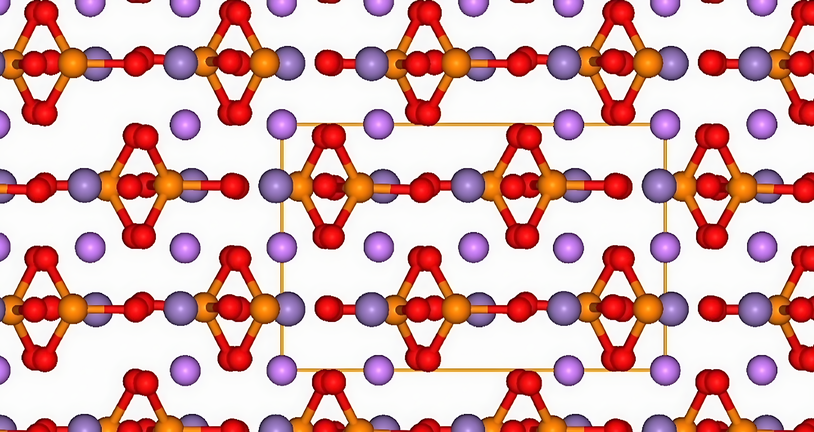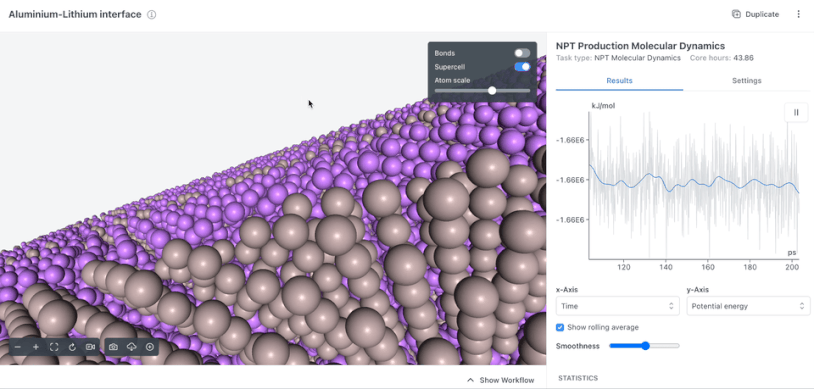Computer-aided Electrode Design for Next-gen Batteries
Technology
Discover how computational R&D is unlocking the potential of next-gen batteries to meet the growing demands for a sustainable world.

The Challenges of Renewable Energy
We're all pushing for a future where renewable energies, like solar and wind, take the lead. Reducing the negative impact of our activities on the planet is crucial. The move towards green practices is vital and demands our full effort, but it’s not without its challenges.
For example, handling the inconsistency of renewable energy is a big challenge: there are days when the sun doesn’t shine, or the wind doesn’t blow. On the other hand, situations arise when the energy produced surpasses both demand and the grid's handling capacity. This scenario, known as curtailment, results in waste unless the energy can be appropriately stored.
One technology has emerged to address both these issues. Yes, you guessed right. It's energy storage devices like batteries.
QuantistryLab View – Li Migration – Energetic Profile
Beyond Lithium-Ion Batteries
Batteries, especially lithium-ion, with a Nobel Prize in their portfolio, have seamlessly blended into our daily lives. They power everything from the quick electric vehicles on our streets to the ever-present smartphones in our pockets, sparking a revolution of convenience and sustainability.
But wait – even with their crucial role and impressive results, lithium-ion batteries need a bit more oomph to meet our growing demands. In fact, to realize our global electrification dreams, they need a big boost—increasing their energy density from the current 300 Wh/kg to a hefty 500 Wh/kg.
Moreover, there’s a challenge of ethics and environment, nudging us to find alternative materials that are not only more abundant and easier to mine but also kinder to our planet.
Now, a battery isn’t a simple box. It’s a mix of electrodes and electrolytes ensuring ions move back and forth. Enhancing energy density, performance, and life cycle needs a careful blend of these components.
QuantistryLab View – Cathode Structure of Li-ion Battery
Quantistry's computational approach
It’s a tricky chemical puzzle. In the search for the next big breakthrough in battery technology, we're looking at a staggering 10100 potential combinations of active materials. While “trial and error” methods have given us some great wins, we now need extra help to sift through the immense number of material possibilities.
Computational approaches, where QuantistryLab shines, can give this needed support, greatly aiding experimental efforts.
What typical challenges do our customers aim to resolve?
Improving electrode composition, and exploring potential coating solutions
Optimizing electrolytes and electrolyte formulation
Understanding the electrode-electrolyte interface

QuantistryLab View – Dynamics of Metal Interfaces
Harnessing Computational Power for Battery Innovation
So, how does QuantistryLab assist with these challenges? We mix computational screening, multiscale simulations, and machine learning to systematically search through the immense material space and find promising battery material candidates, ready for more experimental validation.
In our approach, atomistic simulations become a crucial tool, providing deep insights into basic processes, like ion diffusion and electronic structure. Moreover, our theoretical models aren’t just add-ons but provide a rich, interpretative layer that enhances physical experiments. To ensure our computational methodologies are solid, we validate them with known data, using predictive capabilities crucial for evaluating important battery performance metrics like lithium-ion migration, open-circuit voltage (OCV) curves, and effects of dopants on electrodes.
This thoughtful combination of computational approaches forms a predictive framework, enhancing our understanding of complex electrochemical processes and aiding the development of next-gen battery materials.
QuantistryLab View – Li Intercalates Into a Si Surface
Expanding the Toolbox of Battery Developers
We've applied these principles in all collaborations with our customers, many of whom lead the battery industry globally. Our QuantistryLab has helped them identify optimal next-gen electrode materials to meet their commercial goals. Notably, our simulation results often act as a catalyst, inspiring more experimental research and fostering a constructive feedback loop between simulations and real-world experimentation, thereby speeding up R&D success, while optimizing costs and resources.
QuantistryLab's Battery Developer goes beyond electrode composition, offering additional modules to explore electrolyte components, formulations, and electrode-electrolyte interactions. This nicely complements our digital toolbox, designed to tackle all R&D challenges related to understanding, and thus optimizing, your next-gen battery materials.
If you're eager to delve further into the electrifying world of batteries, be sure to explore our use cases on 'Electrode Materials with Optimal Open Circuit Voltages (OCVs)' and 'Improved Performance of Batteries Through Optimized Intercalation, Increased Lithium Mobility, and Reduced Plating.'
Explore our Blog for more awesome science, and get in touch via LinkedIn for the latest in simulations.